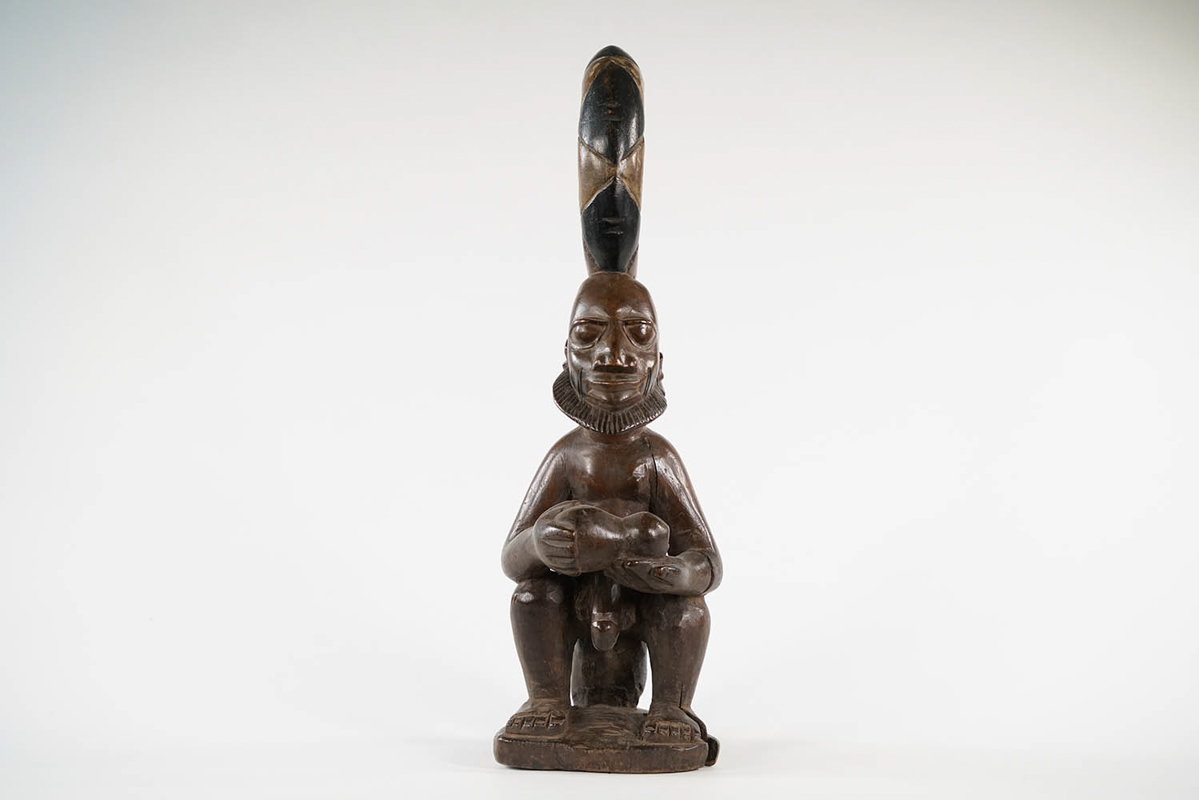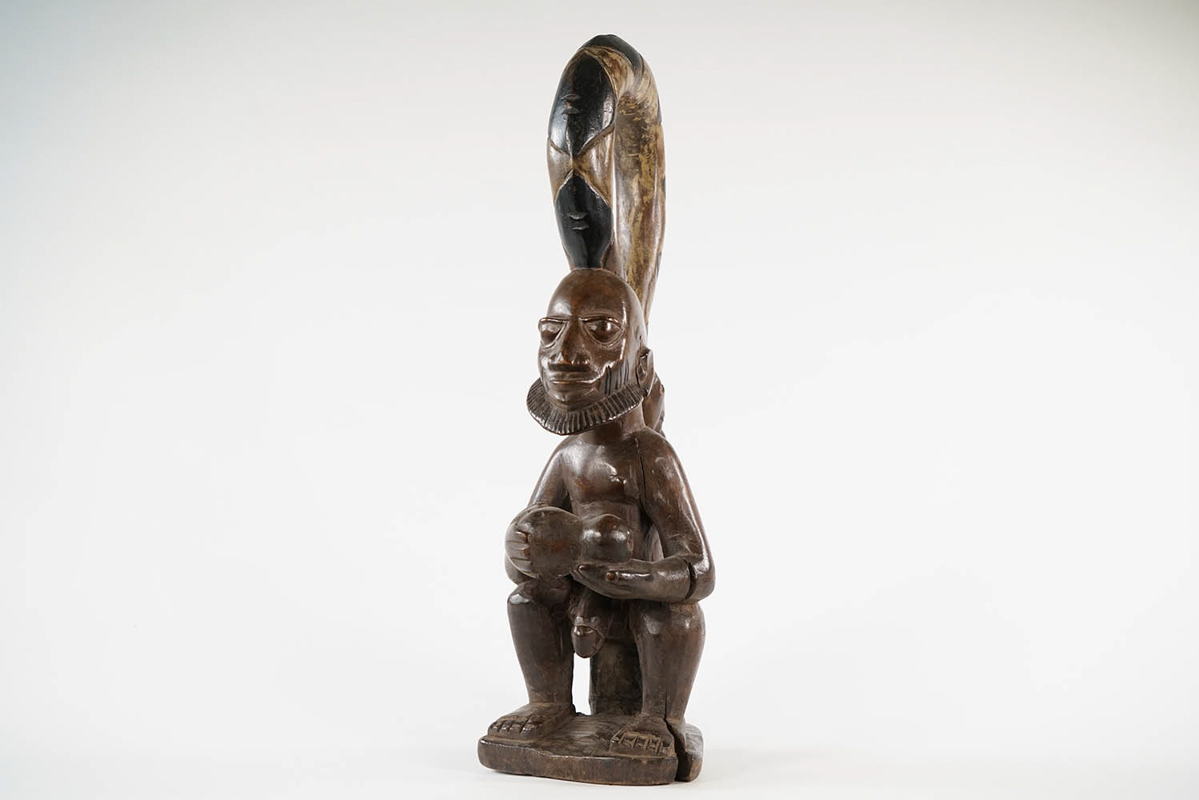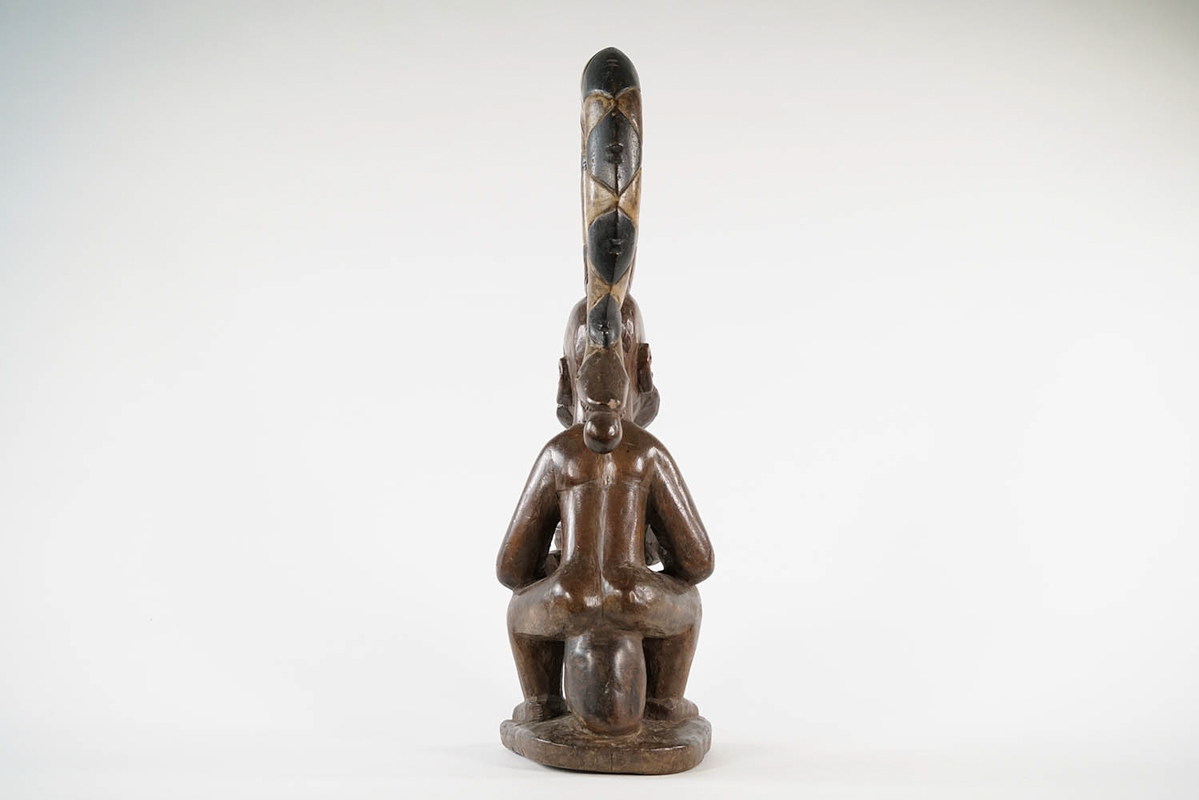This statue was created in the style of the Yoruba people of Nigeria. The statue portrays a seated male figure holding an object and has an arced snake protruding from the top of its head. The statue measures 19 inches tall and weighs 3 pounds. There is some imperfections including cracking, scrapes and scuffs – please see photos.
Impeccable Yoruba Figure with Snake 19″ – Nigeria – African Art
Original price was: $450.00.$112.50Current price is: $112.50.
Sold

| Type of Object | Figure, statue |
|---|---|
| Country of Origin | Nigeria |
| Ethnicity | Yoruba |
| Animal | |
| Material | Wood & pigment |
| Approximate Age | Unknown |
| Height | 19" |
| Width | 6" |
| Depth | 6.5" |
| Weight | 3 lbs |
| Overall Condition | Imperfections including scrapes, scuffs and cracks – see photos |
Tribe Information
About the Yoruba People
The Yoruba are the largest cultural group on the African continent, with nearly 40 million people. The word ‘Yoruba’ describes both the language and a tribe living across Nigeria and the Popular Republic of Benin, in an area of forest and savannah.
Geography
The Yoruba people’s primary living space is South-West Nigeria with substantial Yoruba communities in Benin, Togo and Sierra Leone but they are not bound by state or country borders. This area is often referred to as “Yorubaland”. Most of the terrain is either forest, woodland savannah, rich farmland or coastal swamps and lagoons.
History
The origin of the Yoruba people in Nigeria is heavily debated. Some believe they came from the east in Mecca, some say from the north in Egypt. Evidence shows that ethnically, Yoruba’s have been in the area known as Yorubaland since the 7th century BC. Scholars believe the area was probably inhabited earlier by peoples of the Nok culture. Yorubaland covers the modern-day countries of Nigeria, Togo and Benin. The term Yoruba to describe ethnicity, did not come about until the 16th century and wasn’t widely used until the 19th century. Before then, the Yoruba people were known by many names depending on who was acknowledging them. For instance, the Europeans referred to them as Akú, whereas in Cuba, they were referred to as O luku mi.
Read more about the Yoruba here.






